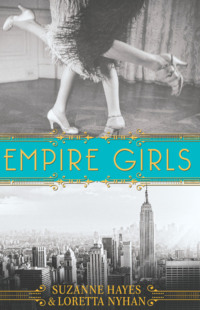
Полная версия
We Are Not Such Things: A Murder in a South African Township and the Search for Truth and Reconciliation
At least—with the exception of some blogs run by disapproving white-power enthusiasts who, upon relating Amy’s story, gleefully claimed, “liberalism can get you killed!”—that was how the story had always gone, repeated ad infinitum in over a thousand national and international newspaper and magazine articles, in award-winning documentaries, on talk shows, on radio shows, on TV shows. And why wouldn’t it? Its stars played their parts, and confirmed the arc and breadth of the distinct narrative: black South Africans, loving by nature but distorted into rampage by apartheid, who had been reformed and redeemed through the grace of an inspirational if puzzling pair of good-looking white Americans.
Now it was the twentieth anniversary of Amy’s death. Press interest had waned years ago. Before, the top journalists at major international papers had covered the ongoing story, but now the only foreign press was a reporter from Linda’s hometown paper, The Orange County Register, jotting down notes. During this trip, Linda had one radio interview, which was in turn picked up by a single website. The press had largely forgotten about Amy and the Truth and Reconciliation Commission, and were busy looking into the more immediate potty protests, during which angry township residents who wanted to relieve themselves in flush toilets instead of the communal sludge buckets they currently employed, had taken to throwing human feces at the mayor’s vehicle and dumping the contents of their latrines near Parliament. CAPE TOWN POO WARS, the BBC headline shouted.
Regardless, the people in St. Columba’s church that day were focusing on Amy’s too-brief life. The foundation loyalists, women who had known and worked for Linda for fifteen years, snuck into the church late, one with her hair tied into knots so tight that her scalp was pulled and red, one intently applying lip gloss with a wand. Ntobeko’s wife, wearing a pale gray skirt and top with her hair in ringlets, and their two older daughters in freshly pressed dresses, sat to the back. Ntobeko himself was not there. A haze of incense settled near the ceiling; I could feel the perfume spreading through my lungs.
“Jesus was a teacher, Jesus was a rector, Jesus was everything!” a lady preacher in colorful patterned Xhosa garb began.
“Yes!” said the congregants. They were mostly women, ranging in age from thirty to ninety, in African-print dresses, cardigans, shawls, blazers. A minority of men and children were scattered few and far between.
“Whom do I trust?” the preacher asked rhetorically. “Jesus!”
“Mmmm hmmm,” the ladies said.
The preacher launched into Xhosa, then reverted to English. She introduced Linda as “Amy Biehl’s mother.”
“Hiiii,” the ladies said in unison. In these parts, for the older generation, the name Amy Biehl required no explanation.
The preacher said she’d organized a speaker on the occasion of American guests but the speaker had disappointed her by bailing, so she herself would be speaking today. Don’t we all know about disappointment? Everyone nodded vigorously.
“Amy was a hero,” the preacher said uncertainly. She was winging it. “That was the plan of God. That she must die the way she did.” The preacher turned to Linda. “Thank you for having heart to show peace and love.”
“Amen,” the ladies said solemnly. Linda bowed her head slightly.
A male preacher, dressed in a heavy robe, took over.
“You are here for a reason, Amy was here for a reason,” he said to Linda. “We wish you a good day and we will always remember you in our prayers.”
“Amen,” said the ladies.
I looked around for Easy, then recalled that he was allergic to churches, and so probably would not make an appearance after all. Then again, he sometimes, without great enthusiasm, talked about how Jesus died for his sins, which usually signaled that his evangelical uncle had succeeded in dragging him to a service. So perhaps Easy was, more accurately, allergic not to churches but to the annual memorials to Amy that were held in churches. A year earlier, to the day, at a Catholic church nearby, I had also looked up from the service to find Easy missing. I’d slipped out of the pew and found him pacing nervously on the lawn. He took me into a back room and showed me a bare wall, where local kids used to watch projector movies; he was a sentimentalist, and he remembered, with characteristic nostalgia, not having the five-cent admission fee and sneaking in through a bathroom window.
Now, as the women sang hymns, I went outside to look for Easy, but he was gone, and he had taken the van. I stood in the sunlight, trying to get warm. August is chilly in Cape Town, winter in the Southern Hemisphere. A gray-haired white lady was cutting hearts out of fabric on a bench nearby, assisted by a pretty black teenage girl who called her Grandma. They offered me a heart and a safety pin decorated with colorful beads.
“They symbolize love over violence,” the girl explained as I stuck the pin to my sweater.
Some months earlier, the country had been in an uproar about Anene Booysen, a plain-looking brown-skinned seventeen-year-old from a poor Western Cape town who was gang-raped and disemboweled on an abandoned construction site. An even more newsworthy victim, and one who would captivate the nation’s attention for years to come, was Reeva Steenkamp, the radiant blond thirty-year-old model and reality TV star shot to death through a bathroom door by her boyfriend, the Olympian and double-amputee Oscar Pistorius. These fabric hearts, the lady said, honored Anene and Reeva and Amy, too, and all the thousands of women injured, murdered, and violated by men each year.
I wandered down NY1 to Amy’s memorial statue, by the Caltex gas station and garage where she was killed. From across the street, I could see the dry grass, the old cars piled up for repair, the low stone wall that had long ago replaced the white fence that Amy had leaned on during the attack. The memorial statue was a slick gray marble cross erected in 2010 by the Fulbright Foundation, unveiled to vague fanfare by the U.S. ambassador at the time. On the base of the memorial, carved into stone in elegant capitals, were the words:
AMY BIEHL
26 APRIL 1967 - 25 AUGUST 1993
KILLED IN AN ACT OF POLITICAL VIOLENCE.
AMY WAS A FULBRIGHT SCHOLAR AND TIRELESS HUMAN RIGHTS ACTIVIST.
A disheveled old man usually spent his days leaning against the cross, sleeping rough with his three dogs, but the man had been temporarily relocated to a nearby field. I spotted Ntobeko standing on the pavement above, by the gas pumps. His childhood nickname was Blacks, for he was so dark-skinned that from afar his features were hard to make out. Up close, he was a rotund, somber-looking man in his late thirties, with a narrow face and a weak chin. His head was shaved and rubbed with lotion. His small, glistening eyes were intelligent and suspicious, his nose long and Roman. He was neither tall nor short, and he wore his black Amy Biehl Foundation logo polo shirt stretched tight over his expansive belly.
Ntobeko used to be the scrawniest kid, a pencil neck sticking out of an oversized T-shirt, often borrowed. Now he owned a home, the chicken wholesale business, and two minivans that he used to transport upwardly mobile township children to schools in the city or the suburbs. He was married to his childhood sweetheart and had three daughters. He was a manager, which in Gugulethu held a grand allure—no longer was he merely bossed around, no, finally he got to do the bossing. Ntobeko ate meat nearly every day. His old friends to whom he no longer spoke remembered that he had been a naughty kid who ran around the streets and lived in a tiny house full of extended family. He would miss his household curfew and supper, and find himself locked out for the night. “He was a wild boy who slept in the trees,” one such friend once told me. Ntobeko saw me from across the road and, as always, averted his gaze.
Ntobeko was helping two other foundation staffers arrange a group of children before two marimbas. Marimbas are wooden xylophone-like instruments that originated in Africa and were introduced by sixteenth-century slaves to Latin America, where they were redesigned and spread around the world. A few kids were expertly hitting the bars with mallets, the chimes whipped up into the wind. A chorus swayed behind them, biding their time, singing halfheartedly. I turned back and went to wait outside the church.
Soon, the doors opened and Linda followed the stream of churchgoers. She wore a black pleated skirt, just above the knee, a black top, black pumps, a coral blazer, and a silk coral scarf. Her hair was, as always, perfect: short, angular, gleaming white-blond, and stick-straight.
A ragtag group of people gathered around her, comprised of a couple of academics Amy had known when she studied in Cape Town; the ambulance driver who had tried unsuccessfully to treat Amy as she died; the fabric-heart-making lady and girl; the reporter for Linda’s hometown paper and the photographer who accompanied her; some Los Angeles–based college graduates making a short film starring black South Africans whose hope against all odds would stun and inspire any audience; several people involved in some form of media; and Nancy Scheper-Hughes, the anthropologist who had introduced Easy and Ntobeko to the Biehls.
Nancy was an elfin sixty-something woman with a pert nose and short gray hair; she radiated a nervous intellectual energy. She was a woman molded by the 1960s free love movement, who tended toward all views radically left-wing and, “being an old Wobbly socialist,” actually celebrated Labor Day. Nancy had been working at the University of Cape Town when Amy was killed, though she’d left the country soon after. Back then, Nancy had joined a band of furious women of all different races and marched the streets of Gugulethu in protest, waving placards demanding that the brutality cease. Now Nancy and her husband had flown out from California, carrying the old cardboard signs from that 1993 peace march, which Nancy had saved for all these years and handed out to anyone who wanted one. Nancy was the director of the Program of Medical Anthropology at UC Berkeley, and had published three books significant in her field, but she appeared not to mind bad spelling: a couple of the handwritten signs read STOP THE SENCELESS VIOLENCE and AMY BIEHL, OUR COMERADE.
The small group walked down the street toward the marimba music. Linda wore her sunglasses; she would have made a great first lady, at once regal and Midwestern, warm but removed, with the looks of an aging, corn-fed beauty queen. Everyone followed. Locals, sitting on low walls and smoking on milk crates, watched with little interest. A young man in long shorts stood outside the TyreMan Tyre Shop and clapped without knowing why.
Ntobeko, who saw the group coming, walked slowly away, expertly disappearing into the township. His daughter, the little girl in purple, grabbed Linda’s hand tightly. She wasn’t even in kindergarten, but she knew the drill. The full-color image promptly appeared in The Orange County Register, accompanying a story on love and reconciliation in South Africa:
Linda Biehl, front left, walks with Avile Peni, 3, the daughter of one of the four men convicted and imprisoned for her daughter Amy Biehl’s death on August 25, 1993.
The group arrived at the marble cross, the kids stopped playing, and everyone briefly grappled with what to do next. Somebody had placed upon the memorial a blown-up old photo of the late Peter Biehl, a smiling, white-haired man with the chunked-out build of a retired college football player, flanked by a young Easy flashing a peace sign and a young Ntobeko grinning broadly; it had been taken during their first meeting and was weighed down with a cracked brick, of the sort that had been used to bludgeon Amy. Amy’s old Cape Town university colleagues had offered to arrange a memorial day a while back but hadn’t done anything, so this whole makeshift show had been put together on the fly in the days since Linda had landed a week earlier.
“Who wants to give a speech?” Linda asked. A curly-haired former colleague of Amy’s stood up, said a few words about her departed friend, let out a sob, and threw herself into Linda’s arms. Linda patted her while maintaining a close-mouthed smile; the photographer snapped away. Some others filed before the small crowd and spoke about the loveliness of Amy, the strength of Linda, and the importance of grace and transformation. Nancy, holding her STOP THE SENCELESS VIOLENCE sign, took the stage for twenty minutes, during which her husband shot her a stream of “cut-it-short” glares, which she ignored.
“Amy was a beautiful soul!” Nancy said. She wore wire-rim glasses and long colorful earrings.
I stood away from the group and leaned against a white sedan. Mzi Noji, a middle-aged, unemployed ex-militant, ex-con, and army veteran, arrived on foot, wearing his green cap, embroidered with the phrase UNIVERSAL MESSAGE over a Rastafarian flag. Mzi was a lifelong social activist, raised during the height of the anti-apartheid struggle. Even today, when he claimed that he wanted to get on with his life, he continually found himself embroiled in protests, marches, negotiations, meetings, neighborhood committees, and organizations.
I’d met Mzi by chance a year earlier, and he had become an unexpected kindred spirit, as well as my guide, my translator, my friend. He accompanied me on my expeditions and investigations into the Amy Biehl story, often driving my car and dredging up forgotten people from within the depths of the townships. Mzi was also to be my key to unraveling the truth, or as much truth as possible, of what really happened on that fateful day twenty years before.
Until I met Mzi at a burger shop downtown, I had been tracking the same story that every journalist before me had written, except that my aim had been to tell for the first time the full tale as it stretched over two decades. But Mzi informed me that he believed that this long-accepted story of the circumstances of Amy’s death was not exactly accurate. His revelation had led me, in a series of nearly unbelievable coincidences, to a meeting I had had the day before. After months of frenzied searching, I had finally found an old and ruined man who had also been in Gugulethu on August 25, 1993, though few remembered him. Nobody had ever told his account of that day, nor made the chilling links between what had happened to him and what had happened to Amy Biehl five hours later and a quarter mile away. The old man knew something about brutal mobs and racial violence, and he was the final piece in the jigsaw I had been painstakingly piecing together for two years.
Mzi sidled up next to me, his cap pulled low over his deep-set eyes. He was tall and strong, with a little paunch he was self-conscious about, so he was always abstaining from chocolate milkshakes even though he loved them. We each crossed our arms on the roof of the sedan and rested our chins on our forearms. By then, Easy had reappeared and parked the van to the side of the memorial, and was hiding behind us, hoping he would not be called on to talk. He was mumbling: Man, he hoped Makhulu did not make him stand up before the group.
“Amy was an accidental hero,” Nancy said.
Mzi’s hands were shaking. He looked down at them, and so did I.
“Her death was a Shakespearean tragedy!” Nancy said.
The old lady and the girl had hit up everyone, I noticed. Every lapel boasted a beaded pin and a cutout heart.
“Linda is strong, charismatic, beautiful,” Nancy said.
I looked around. I felt a surge of fury, inexplicable in its intensity. I moved closer to Mzi. In a few days, his great-aunt’s house would burn down, with his great-aunt inside. Just like his own mother’s house back in the old days of politics and firestorms, when the ANC kids in the neighborhood shot it full of lead and set it alight with petrol bombs. Now there was no liberation movement to blame, no just cause or grand scheme, no enemies intent on your demise. Just faulty wiring and cheap petroleum heaters. Mzi was listening intently to Nancy, his face set in that practiced flat expression of his, composed specifically to shroud the fact that he was almost always overwhelmed by various emotions.
Nancy praised Easy and Ntobeko. This was a story of “gentle forgiveness,” she said. “Of lived apology!”
When she finished her speech, the crowd applauded.
Linda stood before her guests. She looked for Easy and Ntobeko. Ntobeko was long gone, so she called for Easy. A sharp intake of breath, back straightened, and then he emerged from behind us and went to her. Easy hooked his arm in Linda’s and stood with her as a local reporter scribbled, a pair of student videographers filmed, the hometown newspaper photographer snapped away. Linda began to say her part. Easy and I looked at each other for the briefest of moments, eye-to-eye above the small crowd, and then he turned back to smile for the cameras.
2.
They tell me: eat and drink. Be glad to be among the haves!
But how can I eat and drink
When I take what I eat from the starving
And those who thirst do not have my glass of water?
And yet I eat and drink.
—BERTOLT BRECHT, “To Those Who Follow in Our Wake”
When I went to live in South Africa in November 2011, I didn’t know what to expect, and I didn’t reflect on it. My husband, Sam, then my fiancé, wanted to return on sabbatical to the country he had left at age eighteen, so I followed. Career-wise, I was untethered. Years earlier, I had published a light travel memoir to nobody’s notice, and since then I had no real writing prospects as far as I could tell. Every single article I pitched to magazines was rejected. I kept submitting short stories set in Montana to literary journal contests, in the hopes of winning $500, but I only came in as runner-up twice, so I actually lost money, since it usually cost $20 to enter. To make ends meet, I had taken to editing a celebrity doctor’s website, despite having no medical knowledge. If Sam wanted to move across the world, I had no argument against it.
Soon after Sam took off to find us a place in Cape Town, I sold the old SUV I’d had for years, moved my boxes to a storage locker in New Jersey, packed an oversized duffel bag full of clothes, forced my flailing dog into a travel-safe crate at the JFK cargo terminal, and hurtled fourteen hours across the ocean to Johannesburg. Sam met me at Arrivals. We planned to drive the nine hundred miles to Cape Town rather than put the dog on another connecting flight, so we rented a car and cut through the Karoo desert.
Karoo, which means “land of thirst” in the indigenous Khoikhoi language, is a vast, bleak scrubland that stretches through the country, searingly hot in the afternoon and cold as steel at night. Sheep roam across its inhospitable terrain, dotted with rugged little shepherds’ dwellings where young boys with hard feet spend months alone. I sat in the passenger seat and gazed out the window at the monotonous landscape. It looked like a place picked over, as if anything of value, anything lush or desirable or even a little bit sweet or pretty, had been collected by a determined band of looters sweeping across the plain, leaving behind only dry bush and dust. The N1 highway slices through that rugged expanse, wide and smooth and lonely.
Only a few hours from Johannesburg, we came upon a gruesome car accident. The remains of a car sat diagonally across two lanes, its mangled hood smashed into its windshield, its roof sliced clean off. The pavement was strewn with glass, sparkling like crystals in the high spring sun, and a couple of truckers had pulled to the side to call for help and to snap cellphone photos. Some merciful soul had rolled a heavy woolen blanket across the top of the car to try to conceal three bodies sitting upright.
The image lingers bright and precise in my mind: two men flank a woman in the back of the ruined car, which was slammed—by what? a tractor trailer?—with such force that the passengers must have died on impact but were not ejected from their seats, perhaps because they were packed so tight in there. All three are slender with dark brown skin, and young, judging by their builds. The woman wears a pink T-shirt. Her hair is jet black and plaited into stiff shoulder-length braids that stick out in all different directions—like Pippi Longstocking, I remember thinking.
From then on, we drove slowly and anxiously to the guesthouse where we planned to stay the night. It was situated in the stark Northern Cape desert town of Colesburg, the halfway point between Johannesburg and Cape Town, where it seemed every other home offered a bed for weary travelers. The owner, an elderly man of British ancestry, led us to our room, a white square filled with pink floral pillows, a pink comforter marred by a tiny blood spot, and a knitted woolen throw so rough that the dog used it to scratch her back. The decoration was minimal: a single straw hat, pinned with a fake rose, nailed to the wall.
That night, we drove through the town, which gave the impression of overwhelming flatness—flat roads, flat land, flat houses—and ate tasteless, mushy vegetables at a pub patronized only by white people. After, we stopped for snacks at a local twenty-four-hour shop. As I stood in line to pay for chips and a drink, a tired-looking light-brown-skinned woman at the register spoke to me in a heavy Germanic-sounding language I couldn’t understand. She was, Sam explained, a colored woman, a term that sounds offensively retrograde to Americans but is in fact the designation for the population of mixed-race South Africans. The language she had directed at me was Afrikaans, a derivation of Old Dutch spoken mainly by South Africa’s colored people and white Afrikaners, the descendants of early European settlers.
The next day, as we were leaving, we chatted with our host, a former school principal who said he had taken a buyout package for state employees when the black majority came to power in 1994. He had retired early to run this unique interpretation of an inn.
“So, what’s the population of Colesburg?” Sam asked.
“Two thousand whites, five thousand coloreds, and fifteen thousand blacks,” the man answered. That was how he automatically understood his hometown—as a collection of people broken into racial categories. We herded the dog into the car and headed toward our final destination: Cape Town.

The Western Cape contains the southernmost tip of the African continent. European explorers and kings and queens had long agreed that if they could only round the Cape, they would be able to sail northeast to India and open a sea route to Asia, with its silks and spices and gemstones and teas. Such a route would prove lucrative to European powers, which had so far only managed to arrange an arduous and dangerous trade trek through the Middle East, which was teeming with bandits and costly middlemen. The only problem, as the Europeans saw it, was the Cape’s habit of swallowing ships.
On February 3, 1488, the square-jawed Portuguese voyager Bartolomeu Dias and his crew anchored near a freshwater spring in a fishing village known today as Mossel Bay. Dias had departed Lisbon seven months earlier in an attempt to chart a new southern route to Asia, and he and his haggard crew had just survived a harrowing storm. Above, watching from a bluff, stood a group of Khoikhoi tribesmen, indigenous cattle farmers with yellow-brown skin, standing around five feet tall.
The Khoikhoi, grazing their animals by the sea on that day in the fifteenth century, watched as a vessel full of ashen humans docked in their watering hole and started taking water. The Khoikhoi were not a particularly warmongering group, but, angry and frightened, they pelted the explorers with rocks. The whites responded with gunshots, killing a Khoikhoi before sailing away.
Though Dias wished to continue charting the eastbound journey, his bedraggled crew threatened mutiny, and so the ship stopped at what is now known as Bushman’s River, where Dias planted a Portuguese flag and then turned homeward. One cold comfort for Dias was that he had at least laid eyes on the meridional tip of Africa, a rocky point of land where waves crashed relentlessly against the shore and heavy winds blew through tough grasses and low, hardy scrubs. The balmy currents of the Indian Ocean here meet the arctic currents of the Atlantic. From a height, one can see the two bodies of water tangle together in a shaky line of wild white foam that stretches past the horizon.











